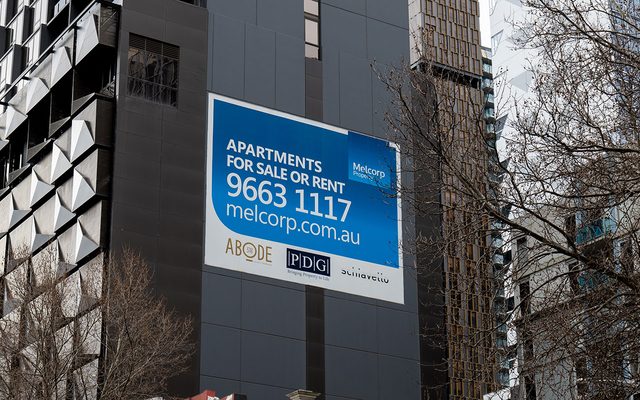This article is from the Australian Property Journal archive
THE major cities are again leading the charge in Australia’s runaway house price growth, with values increasing at their fastest rate for 32 years during March, and Melbourne joining others in completing its COVID recovery.
Sydney values were up 3.7% and Melbourne by 2.4%, according to the latest CoreLogic data, as all capitals posted strong growth. Hobart was up 3.3%, Canberra 2.8%, Brisbane 2.4%, Perth 1.8% and Adelaide 1.5%.
The national rise of 2.8% was the fastest since October 1988.
One year after the pandemic struck Australia in earnest, Sydney dwelling values are now 2.6% higher than their previous all-time peak of July 2017 – having roared back from the 14.9% drop in values through to May 2019 and the further 2.9% fall throughout the COVID downturn.
Similarly, Melbourne has recovered from the 11.1% fall between 2017 and 2019, and the 5.6% drop over the last year.
CoreLogic’s research director, Tim Lawless said housing market strength is being supported by a disconnect between demand and supply.
“The ratio of sales to new listings is tracking at around 1.1, implying for every new listing added to the market, 1.1 homes are sold. Such a rapid rate of absorption is keeping overall inventory levels low and adding to a sense of FOMO amongst buyers,” he said.
While new listings nationally are trending 8.1% higher than a year ago and 3.0% above the five year average, advertised listings in March were 25.5% below the five-year average, with buyer demand consistently outweighing new advertised supply, according to Lawless.
CoreLogic estimates the number of home sales over the March quarter were 21.9% higher than a year ago.
Lower density housing continued to outpace higher density housing for capital gains. House values nationally were 3.0% higher over the month while unit values were up 1.9%. Quarterly growth across the capitals for houses was 6.5%, more than double that of units at 3.1%. Over six months, house sales was tracking 16.5% above the decade average, while unit sales were 0.3% lower than the average.
Unit markets have turned a corner, with Sydney recording two consecutive months of rising values, while the Melbourne unit market has seen values rise at an accelerating rate since October.
Cities back on top
The price gains in Sydney and Melbourne mean larger capitals have started to outpace many of the smaller cities that were previously leading the charge in growth. For the first time in a year, growth in capital city housing values outpaced the regional markets, at 2.8% against 2.5%.
Housing values in regional areas are 11.4% higher over 12 months, demonstrating the earlier stronger growth trend, while the capitals are playing catch up and are now 4.8% higher.
Across the regional markets in March, gains were highest in NSW, where values were up 2.8% over the month. Victoria was the only state where regional housing values (up 2.6%) rose at a faster pace than their capital city counterparts.
How long will the run last?
Questions will begin to be asked as to how sustainable the run is, more so given the HomeBuilder package – which much of the market momentum has been attributed to – was wound up at the end of March.
Lawless said that while short term interest rates are unlikely to increase any time soon, and the economic recovery has some way to go, housing affordability constraints, particularly for those who do not own a property, are mounting. The Reserve Bank does not expect to raise interest rates until the economic recovery is much more established, and believes that point could be three years away.
Substantially less fiscal support going forward for home owners and potential first home buyers will likely contribute to a tapering of demand, Lawless said, while prospect of tighter credit policies is also on the radar.
“While we are expecting housing values to continue rising throughout 2021 and well into next year, it is reasonable to expect the pace of growth will slow.”
Ben Udy, Australia and New Zealand economist at Capital Economics, said house prices are surging, but forward indicators are somewhat mixed and Capital Economics suspect the pace of price growth will ease in the second half of this year.
AMP Capital’s chief economist, Shane Oliver agreed. With variable mortgage rates set to remain ultra-low, he expects average prices to rise another 15% to 20% or so over the next 18 months to two years, but the pace will likely slow through 2021 and 2022.
He said that in the absence of an ability to raise interest rates, the RBA and APRA are expected to reach for macro prudential controls to slow housing lending.
“While they don’t target house prices and are of the view that we have not yet seen a significant deterioration in lending standards on the metrics they look at, past experience indicates that surging house prices leads to a deterioration in lending standards and increasing financial stability risks.”
Metrics the RBA and APRA are likely to respond to are pushing up, he said, such as a deterioration in lending standards with record housing finance pointing to an acceleration in housing debt, an increasing share of lending at high loan to valuation ratios and a rising share of interest only loans albeit from a low base.
Oliver also said the recovery in immigration once the international borders are reopened is likely to be gradual and if so, “this will allow for years of property undersupply to give way to oversupply which is the best way to take pressure off house prices”.
He said the ending of JobKeeper and the expiration of home loan deferrals may also act as a dampener to the extent that they may boost forced sales, but in the absence of a significant pandemic lockdown the impact is likely to be marginal.




